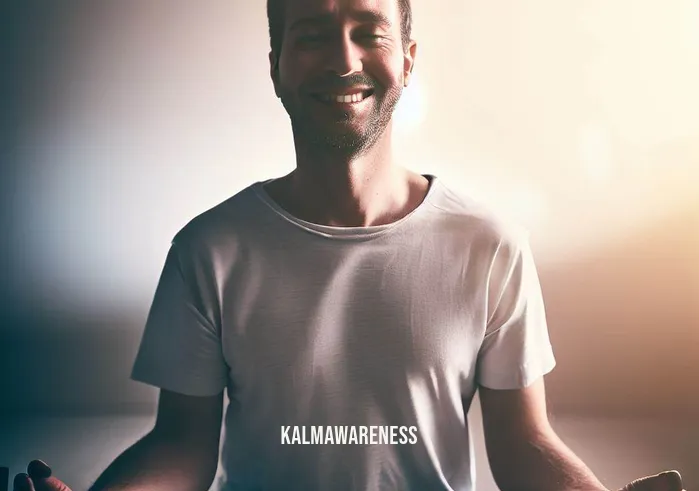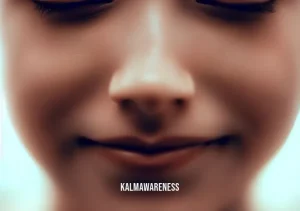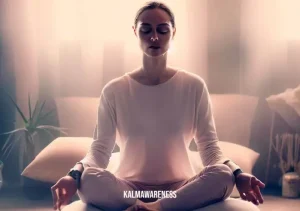Unveiling the Power of EMDR Meditation for Trauma Healing and Emotional Wellbeing
What Is EMDR Meditation?
Eye Movement Desensitization and Reprocessing (EMDR) is a therapeutic approach primarily used for treating PTSD and other trauma-related conditions. In this innovative method, the patient follows a guided set of eye movements while recalling traumatic memories, which aids in processing these memories in a less distressing way. EMDR Meditation takes this concept one step further by combining the established therapeutic techniques of EMDR with the mindfulness and relaxation elements of meditation. The fusion of these two methodologies aims to enhance emotional processing and foster a profound sense of calm.
How Does EMDR Meditation Work?
The Role of Eye Movement
In EMDR therapy, eye movement is pivotal. It is believed that guided eye movements help in accessing traumatic memories and facilitate emotional processing. The eye movements are generally conducted by a trained therapist who guides your gaze from left to right in a rhythmic manner. In EMDR Meditation, similar eye movements are combined with meditation techniques like focused breathing or mind-breaths, making it easier to reach a meditative state.
The Importance of Mindfulness
Integrating mindfulness into the process amplifies the benefits. Mindfulness in this context means a heightened awareness of the present moment, usually achieved by concentrating on your breath or on bodily sensations. There are various ways to incorporate mindfulness, including practices that help you relax and be aware.
EMDR Meditation and Trauma Healing
Emotional Processing
Trauma is not just an event; it’s an emotional wound that needs time and space to heal. EMDR helps in emotional processing by allowing you to revisit traumatic memories in a safe, controlled environment. When combined with meditation, which has its own emotional healing benefits, the impact on trauma is profound.
“Trauma creates changes you don’t choose. Healing is about creating change that you do choose.”
— Michelle Rosenthal
Relaxation and Breathing
Besides emotional healing, the practice also encourages relaxation. The incorporation of breathing techniques and mindful awareness practices makes it a potent tool for stress management. Breathing is a crucial part of any meditation practice, and when focused breathing is employed in EMDR meditation, it adds an extra layer of relaxation.
Why Should You Try EMDR Meditation?
Personal Empowerment: Taking charge of your emotional wellbeing can be empowering. EMDR meditation gives you the tools to confront past traumas and current stressors alike.
Accessibility: Unlike traditional EMDR, which requires a trained therapist, EMDR meditation can be done at home once you understand the basics. This makes it more accessible for people who may not have the means or time for regular therapy sessions.
Complementary to Other Techniques: EMDR Meditation can easily be incorporated into other mindfulness and relaxation practices, such as mindful movement for sleep or floating meditation.
By understanding the intricate layers of EMDR Meditation, we open doors to the potential of transformative healing and a deep sense of peace. It’s a practice that not only deals with the wounds of the past but also cultivates an environment for future emotional wellbeing.
In the next segment, we will delve deeper into how EMDR Meditation compares to other popular meditation practices and why it might be the missing piece in your holistic wellness journey. So, continue reading to explore this fascinating realm further.
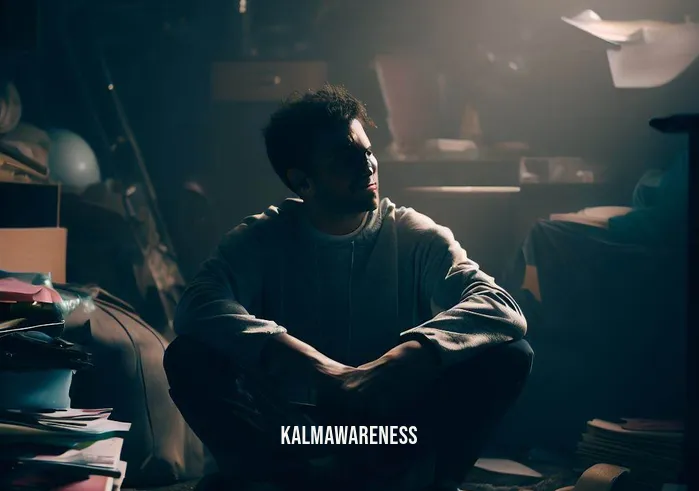
EMDR Meditation: The Synergy of Technique and Impact
A Closer Look at the Multi-faceted Approach of EMDR Meditation
While EMDR Meditation is grounded in the principles of Eye Movement Desensitization and Reprocessing, it is often synergistically blended with various mindfulness practices to amplify its impact. In this advanced exploration, we’ll examine how EMDR Meditation stands out in its utility for emotional healing, and how it can complement other meditation techniques.
The Versatility of EMDR Meditation
One of the most compelling aspects of this method is its versatility. While traditional EMDR is usually a therapist-led experience, the meditation variant offers more flexibility. For instance, you can practice it lying down, sitting, or even incorporate it with hand yoga poses, thereby making it adaptable to your comfort and needs. Additionally, it can be performed with the use of auditory cues like binaural beats for migraines, adding another layer to the experience.
How EMDR Meditation Interacts with Other Forms of Meditation
Given the multifaceted nature of meditation, it’s beneficial to understand how EMDR Meditation interacts with other forms of meditation techniques.
List of Techniques that Complement EMDR Meditation:
Mindful Movement: The blend of meditation and gentle movements, as in Mindful Movement Sleep, can work wonderfully with EMDR Meditation to create a fully embodied experience.
Floating Meditation: This technique, which involves meditating in water to achieve buoyancy and deep relaxation, can be combined with EMDR Meditation for an even more tranquil experience.
Breathing Exercises: EMDR Meditation seamlessly incorporates various breathing techniques that are often found in practices aimed at attaining a peaceful state of mind.
ADHD-Friendly: For individuals with attention disorders, the unique structure of EMDR Meditation can be a useful complement to techniques prescribed for adult ADHD.
Meditation for Children: EMDR Meditation can be simplified to suit younger audiences, integrating well with methods like Kid Calm.
Comparison Table: EMDR Meditation vs. Other Techniques
| Criteria | EMDR Meditation | Mindfulness Meditation | Transcendental Meditation |
|---|---|---|---|
| Focus | Eye Movement | Breath | Mantra |
| Accessibility | Moderate | High | Moderate |
| Versatility | High | Moderate | Low |
| Emotional Processing | Strong | Moderate | Weak |
| Compatibility with Other Techniques | High | Low | Moderate |
The Unmatched Importance of EMDR Meditation
Understanding EMDR Meditation is not just about knowing a new technique; it’s about expanding your toolkit for emotional wellbeing. The approach is so unique that it can fill gaps other meditation types might leave open, particularly when it comes to trauma healing.
Incorporating the right frequency of sound, for instance through 256 Hz benefits, can even amplify the therapeutic effects of this practice. By offering a blend of eye movements, breathing exercises, and mindfulness, EMDR Meditation stands out as a powerhouse for emotional and psychological healing.
Preparing for the Next Level of Exploration
In the next chapter, we’ll take you on a fascinating journey to discover how to practically integrate EMDR Meditation into your daily routine. We’ll look into the preparatory steps, the potential challenges, and the astonishing rewards of making this practice a part of your life. So, continue reading to delve deeper into this unique realm of mindfulness and healing.
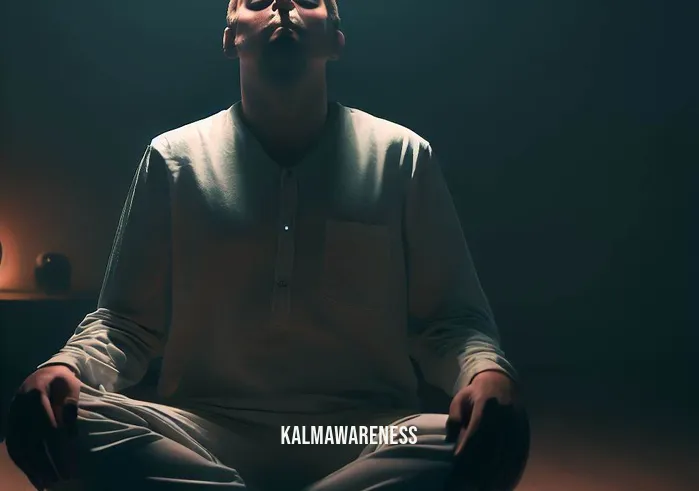
The Transformative Potential of EMDR Meditation: A Beacon of Hope and Inspiration
The Ripple Effect: How EMDR Meditation Reaches Beyond Trauma Healing
EMDR Meditation doesn’t merely focus on trauma recovery; it also paves the way for a more enriching life full of hope and emotional freedom. By facilitating emotional processing and fostering relaxation, this revolutionary practice can open doors to a new kind of lifestyle—one brimming with possibility and a greater sense of well-being.
Quotes That Echo the Power of EMDR Meditation
“Healing takes courage, and we all have courage, even if we have to dig a little to find it.”
— Tori Amos
This quote speaks volumes about the bravery it takes to embark on a journey like EMDR Meditation. It may not be a walk in the park, but the rewards are life-changing. With perseverance, this form of meditative therapy can serve as a stepping stone to a life less burdened by emotional baggage.
“The wound is the place where the Light enters you.”
— Rumi
EMDR Meditation works by opening up your wounds, not to make you relive your pain, but to let light and healing in. It acts as a bridge between your trauma and your healing, enabling you to live a life that is not defined by past events but enriched by the lessons they offer.
“Healing may not be so much about getting better, as about letting go of everything that isn’t you—all of the expectations, all of the beliefs—and becoming who you are.”
— Rachel Naomi Remen
By incorporating U-Relax Moving techniques, EMDR Meditation helps you release unwanted emotional blocks, allowing you to discover and embrace your true self.
Techniques for Inspiration
EMDR Meditation is far from being a one-size-fits-all approach. Tailoring it to your needs could involve various elements:
Affirmations: Positive self-talk can amplify the emotional processing aspect of the practice.
Sound Therapy: As touched upon before, sound can enhance meditation. To explore this, look into Binaural Beats for Migraines as a case study.
Mindfulness Prescriptions: Whether you are an adult dealing with ADHD or other focus-related issues, EMDR Meditation fits nicely into the broader framework of mindfulness prescriptions.
Sleep Aids: If falling asleep is a challenge due to a restless mind, the tranquilizing elements of this practice can lead you to a bed in the clouds.
Holistic Practices: EMDR Meditation synergizes well with other holistic therapies, even those that involve floating meditation techniques.
Fueling Your EMDR Meditation Journey with Mindfulness Resources
One of the advantages of EMDR Meditation is its compatibility with a myriad of mindfulness resources. Beginners in the meditation landscape can kick-start their journey with resources like Meditation for Dummies or the more nuanced Jack Kornfield Meditation for Beginners, which can be great companions in your emotional wellness odyssey.
Setting the Stage for Advanced Exploration
This chapter has been about planting seeds—of hope, inspiration, and potential—that EMDR Meditation can cultivate in your life. We’ve looked at its broad applications, heard the wisdom of impactful quotes, and touched on the vast array of techniques that can make this practice your own.
In the next chapter, we’ll be putting these concepts into action. Prepare to delve into the nitty-gritty of setting up your EMDR Meditation practice, from creating the perfect environment to overcoming common challenges. Are you ready to take the next step? Continue reading to turn these seeds of hope into a flourishing garden of emotional well-being.

EMDR Meditation Decoded: The Practicalities and Nuances
Understanding the Cornerstones of EMDR Meditation
As we’ve navigated through the emotional, inspirational, and hope-filled aspects of EMDR Meditation, it’s time to dig into the practical side of things. Eye Movement Desensitization and Reprocessing (EMDR) Meditation isn’t merely a theoretical concept; it is an actionable method that you can implement in your daily life for emotional processing, trauma healing, and overall relaxation.
The Benefits in Bullet Points
Let’s break down the multifaceted benefits that this meditation practice brings into your life:
Trauma Recovery: Addresses the core memories and feelings associated with trauma, effectively desensitizing emotional distress.
Emotional Freedom: Facilitates letting go of destructive emotions, leading to a more fulfilling life.
Enhanced Mindfulness: Integrates practices that can enrich your overall mindfulness experience.
Holistic Healing: Goes beyond traditional therapies to promote comprehensive wellness.
Improved Sleep: As with other techniques like mindful movement sleep, EMDR Meditation can significantly improve sleep quality.
How Does It Work?
The practice engages multiple elements for a wholesome experience. Here’s a quick breakdown:
Initiation Phase: Preparation with a simple relaxation method like breathing and meditation.
Engagement Phase: Focused eye movement or other bilateral stimulation.
Closing Phase: A return to a neutral state to facilitate emotional processing.
Variations for Every Individual
Just as no two individuals are the same, EMDR Meditation also offers various styles to suit your unique needs. Here are some adaptations to consider:
Child-Focused: Tailored techniques to help young minds, similar to practices found in Kid Calm.
Reclining Position: Wondering can you meditate while lying down? The answer is yes, and EMDR allows this flexibility.
With Movement: Incorporating simple hand movements or hand yoga poses to deepen the practice.
High Awareness: For those curious, you can even explore meditating while high, taking the experience to a different level of consciousness.
A Quick Glance: What to Expect in an EMDR Meditation Session
| Phase | Activity | Purpose |
|---|---|---|
| Start | Breathing | Establish Focus |
| Middle | Eye Movement | Emotional Processing |
| End | Return to Neutrality | Closure and Healing |
Anticipating the Journey Ahead
We’ve decoded the layers of EMDR Meditation, from its compelling benefits to its customizable approaches. By understanding the practical nuances, you’re better equipped to integrate it into your daily wellness routine, whether you’re seeking inner child healing exercises or simply wish to enter a peaceful state of mind.
As we near the end of our exploratory journey, the final chapter promises to offer an illuminating closure. It’s not just a farewell; it’s an invitation to continue pursuing the transformation that EMDR Meditation brings into your life. Prepare to wrap up with essential takeaways, reflective questions, and resources for further exploration. Excited for the grand finale? Continue reading to discover the cherry on top of your EMDR Meditation journey.
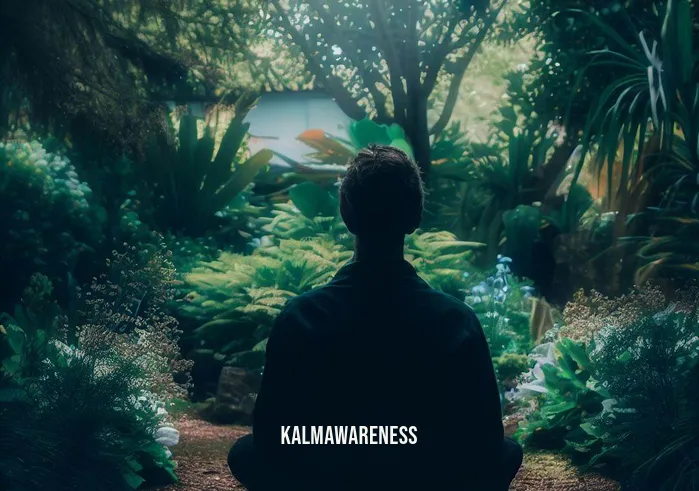
The Horizon Beyond: A Farewell to Our EMDR Meditation Odyssey
The Essence of Transformation
As we reach the end of our in-depth exploration into EMDR Meditation, it’s essential to pause and reflect on the transformation this practice can usher into our lives. Whether you’re a seasoned meditator or someone who’s just beginning, it’s never too late to integrate this profound therapy into your wellness routine. Remember, a life lived in awareness is like a bed in the clouds—comfortable, elevating, and dreamy.
Reflecting on the Journey
We’ve dissected the nuances, delved into the emotional landscape, and parsed through the practicalities of Eye Movement Desensitization and Reprocessing (EMDR) meditation. This powerful technique is not just an accessory to your existing practice but can act as a cornerstone to inner peace, emotional processing, and even as an alternative for those seeking Meditation for Dummies.
Your Personal EMDR Playlist
You don’t need to be confined to a specific format or style. Make it your own! Consider incorporating binaural beats for migraines, focusing on the soles of your feet, or perhaps experimenting with the sound frequencies of 256 Hz. The realm of possibilities is expansive and entirely personal.
Spreading Your Wings for What Comes Next
EMDR Meditation is not a destination but a journey—a continuous process of discovering oneself while shedding the burdens that weigh down the mind and spirit. If you’re looking for more ways to bring awareness into your life, perhaps you might consider options like floating meditation or understanding the mindfulness prescription for adult ADHD. There are infinite paths to explore, and we’re just getting started.
The Journey Doesn’t End Here
As we wrap up, think of this not as a goodbye, but rather as an ‘until next time.’ We’ve covered a lot, from the basics of EMDR to its profound impact on trauma healing and relaxation. If any part of this journey sparked your curiosity, don’t hesitate to revisit previous chapters for a deeper understanding. Each reading can offer new insights, just as every EMDR meditation session can bring a fresh wave of emotional release and clarity.
Call to Action: Keep the Flame Alive
Feel inspired? Don’t stop now! Continue exploring other enlightening pieces in our magazine. If you found this series on EMDR enlightening, chances are you’ll find our other content equally illuminating. We are committed to bringing you comprehensive guides, insightful articles, and all the information you need to make your wellness journey a fulfilling one.
Thank You for Traveling with Us
A heartfelt thank you for joining us on this enriching journey through EMDR Meditation. Your time and openness to explore this profound practice are genuinely appreciated. Be assured that we’re continually working to bring you more compelling, insightful, and transformative content in future editions.
Feel the transformation? Share it, live it, and, most importantly, enjoy it!
Until next time, keep exploring, keep growing, and never stop meditating.
With gratitude,
The Team at KalmAwareness.
